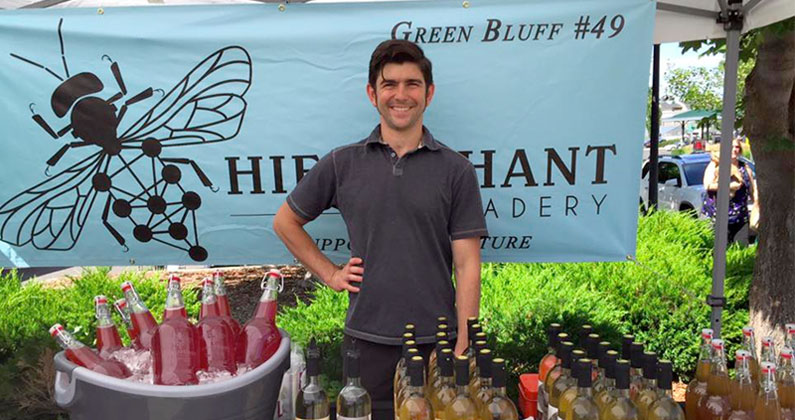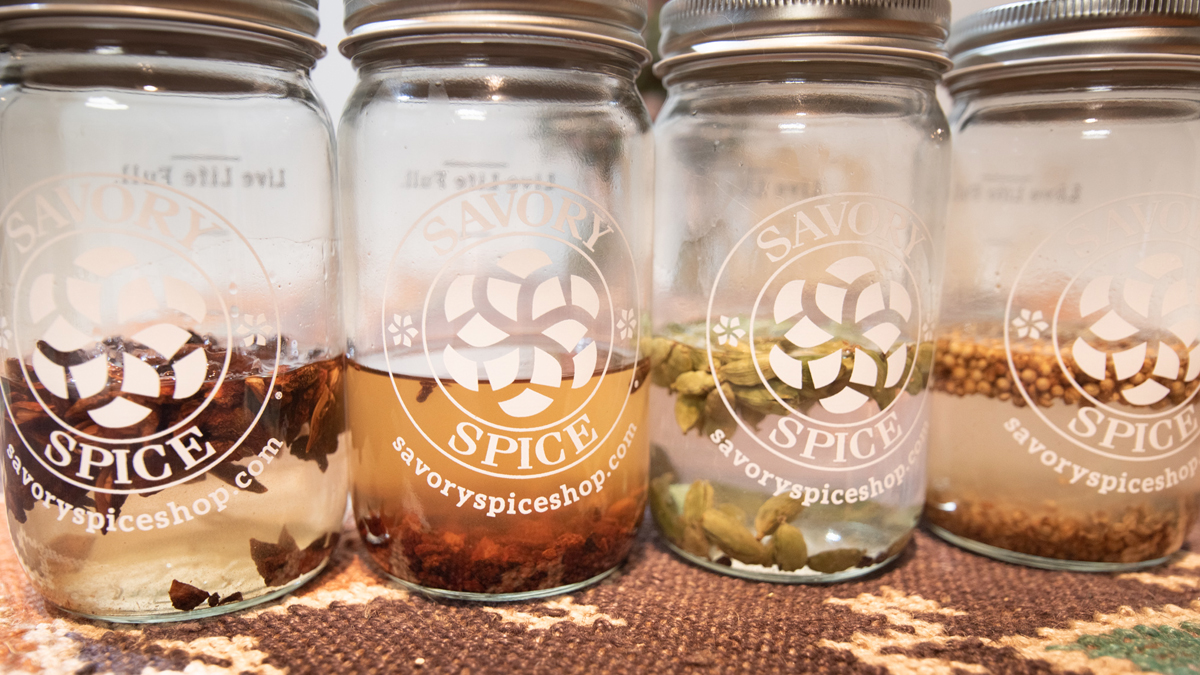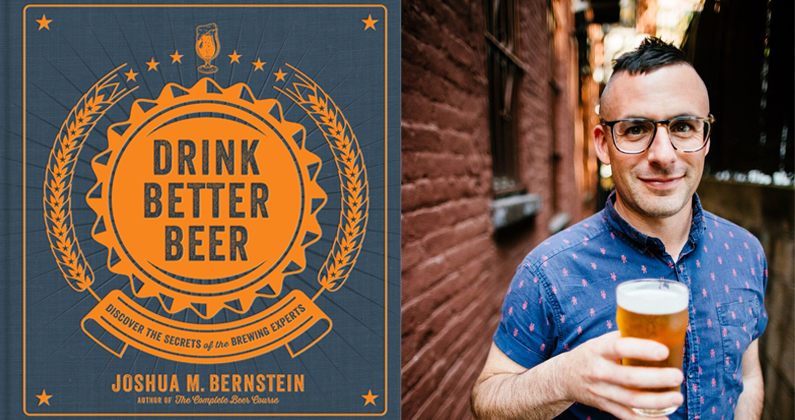Every bottle of mead created by Eastern Washington’s Hierophant Meadery starts with neighboring honey bees. Jeremy Kyncl, along with his wife, Michelle, is on an important mission to honor and express the beauty of the honey bee’s process. In fact, they uphold its job as sacred – comparable to that of the Hierophant (defined as a person who interprets and reveals sacred mysteries or esoteric principles).
A trained herbalist behind the deliberately crafted lineup of off-dry meads, Kyncl uses responsible sourcing practices and regional honey (often from fellow producers who work along the lush Green Bluff farming loop), both playing fundamental roles. The meadery is also aptly located in Mead, Washington.
Kyncl shared wisdom about the ancient traditions and principles that inform the founding pair’s offerings, as well as some fun facts that confirm his commitment to his craft. (Hint: he’s sampled a small quantity of a poisonous plant).
1) Which of your own current offerings are you digging the most?
Song of the Elders is an 8.5 percent session mead with red cedar, Douglas fir and pine resin driving the flavors. It’s really surprising as floral notes are firmly in the driver’s seat and the resinous nature only opens up in the finish. I love the imagery, as the Gymnosperms are the elders of the tree world, and also these are sacred trees that are deeply revered across the western United States. Red cedar was the tree of life for coastal PNW tribes; fir made their spear shafts; piñon formed a staple food of the Anasazi and other Four Corners groups. This connection to our land gets me every time. It’s such a pleasure to express our region in the meads we make… The other is our Poplar Vanilla mead, because it represents the harbinger of the weakening sea wind here in the Northwest. It’s floral, resinous, woody and ties into my limbic memories of late spring, when the sun begins to strengthen and the heat of summer begins to drive the clouds away.
2) Any mead-related pipe dreams you’re dying to make a reality?
We prototyped an Osha root mead that I’d adore to make commercially. It used an earthy, malty honey from Moses Lake and juxtaposed that against the maple, celery and diesel notes of Osha root. The honey is from the heart of the [Columbia] Basin and the plant from the baked mountainous upland that surrounds it.
Osha is one of the Basin’s premier medicinal plants, but it landed on the poisonous plants list with the FDA because it can be mistaken for hemlock, the poison used to kill Socrates. While we, as Bastyr University trained herbalists, are perfectly comfortable positively identifying it by sight, smell, taste and effects — I’ve taken small quantities of poison hemlock — we made the decision not to pursue this mead because our knowledge is relatively rare, and even more so among members of the craft beverage scene. The health of our customers won the day, as we decided it just wasn’t worth the risk. It’s still one of my favorite meads we’ve created, not only because it so clearly represents the dominant geographical feature of Western America, but also because it showcases the complex interactions of place represented in the Chinese principle of di dao.
3) What non-mead beverage is in your glass most these days? What is your favorite way to enjoy it and where?
My homebrewing has always focused on mead and beer, with some cider mixed in. We have the deep pleasure of sharing Spokane with some excellent brewers and cidermakers – names like Twilight Cider Works, Liberty Ciderworks, Iron Goat Brewing, Young Buck, Big Barn Brewing. Still, as a nerd about the deep historical traditions in fermentation, you’ll most often find me taking in the gruits at Bellwether Brewing. We adore Albion, his Heather ale, and also really enjoy the collaboration brew We Are Gruit, put together for Gruit Fest this winter by five local brewers. The dominant yarrow and roasted red pepper notes get me every time. After two collaborations, we continue to push each other and help one another. We’ve had the pleasure of contributing Douglas fir resin from our property to his brews, and our Vin du Noix inspired braggot, Darknut, will become an annual tradition with this year’s batch.
Our latest braggot collar was hatched over pints of We Are Gruit by the fire pit after party for my youngest third birthday. To sit out with a quality beer and watch night coming down on Green Bluff with my fellow brewers is the essence of heaven to me.
4) Favorite song, album or artist to jam out to while throwing a few down the hatch?
We roll with reggae and the blues most of the time. I can’t possibly get enough of Albert King. I usually get my day started with Elmore James’ version of “Dust My Broom,” and Macklemore’s “Ten Thousand Hours” lately. My wife, Michelle, loves Soja and Sia to work to.






